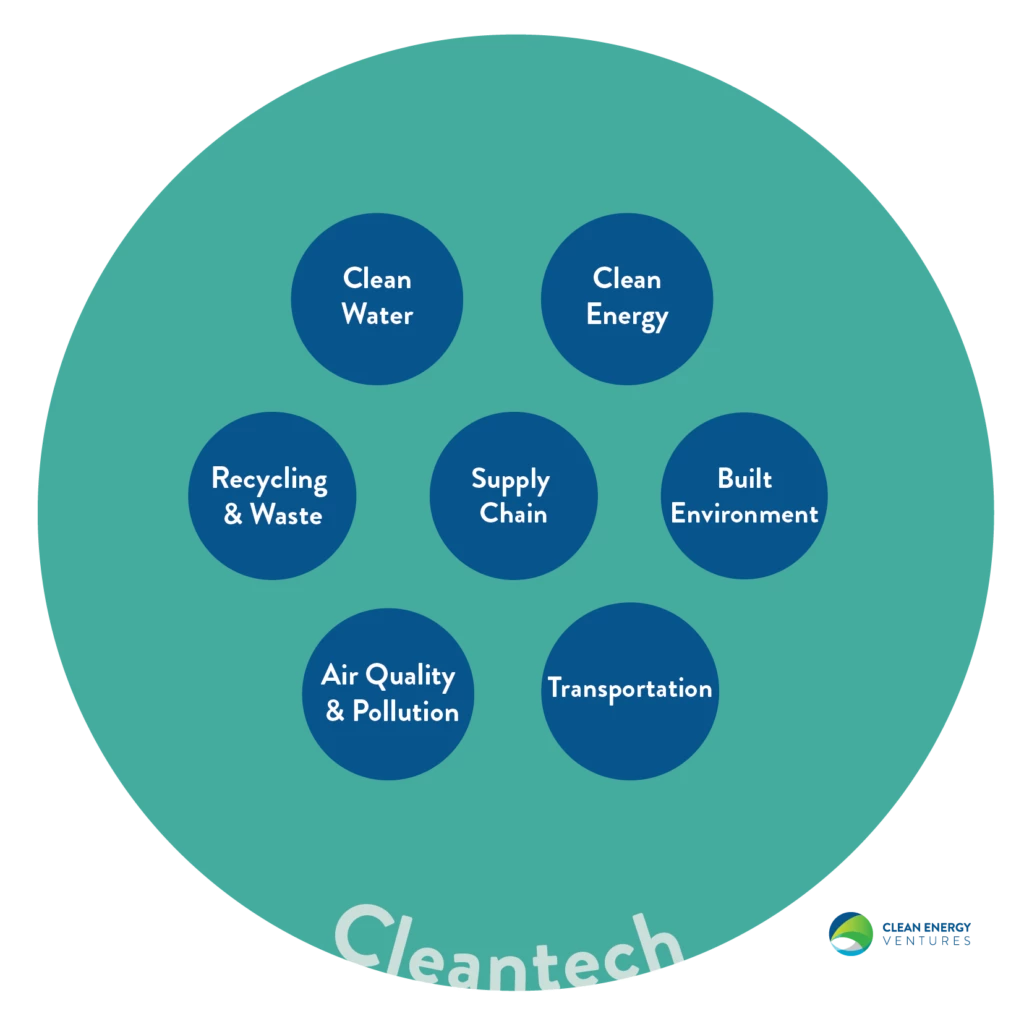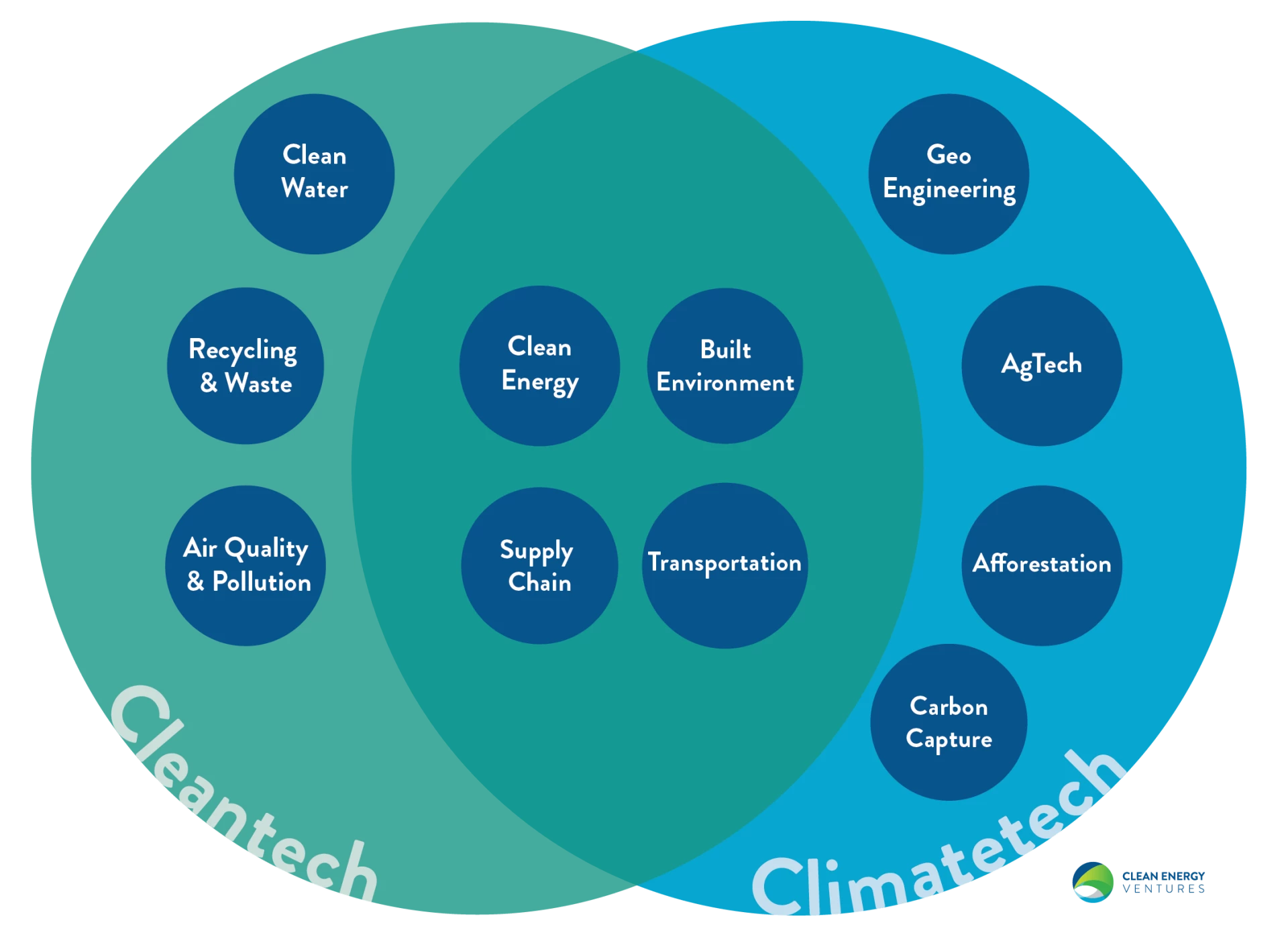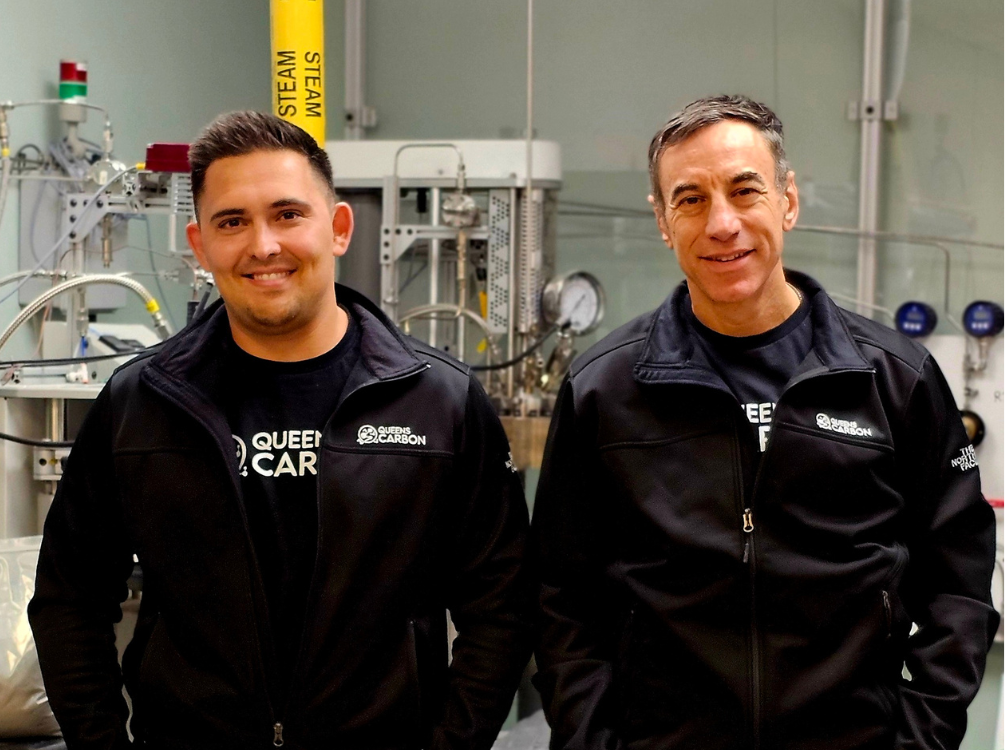2021 Update: “Climate tech” as a term has certainly taken off since this article was originally written on February 19, 2020 . Throughout 2020 companies involved with technology solving climate change, investors, incubators and accelerators have all cropped up using the Climate tech term. This article has been updated to include some of these new usages and additional resources for 2021.
If you’ve watched the movement to address climate change over the past year, you’ll notice the increasing conversation around “climate tech”. In the last yerar, Greentech Media discussed the term on The Interchange Podcast, Greentown Labs revised their messaging around climate tech, new accelerators have hit the market like Third Derivative and For Climatetech venture studio, and the popular Climate tech VC newsletter by Sophie Purdom has built a strong following.
As ‘climate tech’ gets used more and more, it’s worth debating whether we are in the midst of a rebrand of ‘cleantech’ or if this is the start of something else. If we look closely at the concepts of cleantech and climate tech, we’ll find the terms are more siblings than identical twins; while cleantech addresses humanity’s impact on the environment, climate tech is expressly concerned with the mitigation of greenhouse gas emissions, a major driver of climate change.

The origin of cleantech dates back to 2002 at a time when ‘greentech’ had failed to bridge the gap between policy-driven initiatives and to deliver meaningful financial returns to investors. According to Neal Dikeman, “Cleantech is a term popularized in about 2002 as an umbrella term to describe the ‘green and clean’ technologies that venture capital investors were turning to in increasing numbers as the next big thing in technology investing after the collapse of the tech boom.”
After the 2008 financial crisis, cleantech – like greentech before it – experienced a massive collapse. To this day, cleantech continues to draw skepticism from some investors. But recently, cleantech has rebounded with several new venture funds and growing returns. With investors now stepping up, the question remains whether they are buying into cleantech, climate tech, or both?
What’s the difference betweeen climate tech and cleantech?
Traditionally, we have defined cleantech as any new business model or technology that increases the performance, productivity and/or efficiency of production while minimizing negative impacts on the environment. This includes clean energy, clean air, water treatment, transportation, recycling and waste reduction, supply chain improvement, the built environment, manufacturing, and more.
On the other hand, climate tech deals specifically with addressing climate change and thus, is defined as any new business model and technology that mitigates the impacts and drivers of global greenhouse gas emissions (i.e. climate change). This includes new technologies in sectors such as clean energy, which focuses on reducing our reliance on GHG-producing fossil fuels; transportation, one of the top GHG emitters globally; and the built environment, where improved energy efficiency and innovative building materials can reduce building energy consumption and thus GHG emissions when considering the current energy production mix.

While climate tech encompasses many of the same areas as cleantech, the two terms differ in a few key areas. First, increasing GHG emissions only cover a portion of humanity’s overall effects on the environment, while cleantech covers a much broader swath. Consider new technologies that tackle the issue of clean drinking water in developing countries. While clean water is an important environmental and human health concern, clean water by itself does not actively reduce GHG emissions – hence qualifying as cleantech but not climate tech. Similarly, agtech solutions provide meaningful opportunities for carbon sequestration and methane reduction, which moves the needle in mitigating the effects of GHG emissions. Yet, the primary goal of agtech is not to minimize our impact on the environment but rather to develop more efficient and less harmful methods for quality food production. Thus agtech is climate tech but not cleantech.
To take this even further, let’s look 20 years into the future. Following this critical decade of action, we may still need to consider radical geo-engineering solutions such as solar radiation management, which would reduce the effects of climate change but may negatively impact other aspects of our environment. In this case, geo-engineering is climate tech but certainly not cleantech. New technologies designed to protect humans from the effects of climate change (read: our impending need to save Miami from drowning) would then be considered climate tech, too.

Though we use the terms interchangeably, climate tech and cleantech aren’t synonymous, nor is one the parent and the other the child. In reality, the terms are more like siblings with shared areas of interest but slightly different missions. While climate tech has a unique set of priorities based on addressing a monumental, global challenge, cleantech is focused on improving humankind’s efficiency and interaction with the environment around us.
Is Climate tech overtaking cleantech for investors?
Regardless of the nuances of both definitions, climate tech is still likely to eclipse cleantech in reach and frequency of use in the coming years— the trend is already starting and it just feels more ‘woke.’ According to Yale University’s Six Americas Study, a record number of Americans (29%) are alarmed by climate change. And beyond that, decision makers are taking notice of the need for climate action. The World Economic Forum this year directly addressed climate change, and large global investment corporations like BlackRock now have a new 2020 view of the risks associated with climate change for investors.
BlackRock isn’t the only player on Wall Street thinking this way either. There are a number of reports emerging about the investment opportunities and risks associated with climate change, which focus squarely on decarbonization. Many clean energy venture capital firms – Clean Energy Ventures among them – also have investment criteria or metrics that are directly tied to GHG emissions, bringing climate change front and center in the investment mandate.
As a newly coined term, climate tech also has a clean slate in the investor community. While many investors still feel burned by the collapse of cleantech a decade ago, climate tech doesn’t have the same stigma and may be easier to embrace. This creates an opportunity for investors – the early drivers of this sector alongside willing entrepreneurs – to see the possibility and promise in investing in solutions that address one of the most significant challenges for our current and emerging generations. Regardless of which term investors choose to use, we cannot deny that investments in cleantech and climate tech are imperative and directly impact our future.
Additional Resources on Climate Tech Growth
Looking to learn more about investing in Climate tech and how the market is growing? Take a look at some of these recent reports and perspectives:
- The State of Climate Tech 2020, PwC.
- A Running List of Climate Tech VCs from ClimateTechVC
- Silicon Valley is Investing in Climate Tech, Quartz
- Amazon Launches $2B Climate Tech fund, Pitchbook




